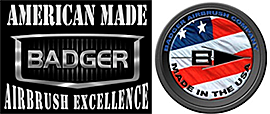
Immediately recognizable due to its name and appearance, the bazooka is one of the most iconic weapons of all time. Developed in the early 20th Century, it first saw widespread use during World War II. The development of the bazooka entailed two separate technologies: rocketry and shaped-charge warheads. Like many WWII inventions, it was a high-powered weapon that was scaled down for increased mobility and ease of fire. It was named by General Gladeon M. Barnes, Chief of Research and Engineering in the Ordnance Department, who thought it looked like a novelty musical instrument of the same name invented by comedian Bob Burns.

The concept behind the bazooka was to create a handheld weapon that could inflict significant damage against armored vehicles. Previously, weapons of this power had overwhelming recoil. Artillery and mortar solved this problem by being massive and secured, sending the power of the recoil into the ground. The developers of the bazooka realized that a rocket sent down the barrel of a tube could overcome this effect, since the thrust of the rocket would push against the air, rather than against the wielder. One such weapon was created in 1918 by rocket physicists Robert Goddard and Clarence Hickman, just in time for the end of World War I.


In the late 1930s both German and Swiss scientists worked with shaped-charge explosives that could penetrate metal plates by focusing the explosion in a single direction. In the United States, this technology was first applied to hand grenades, but the resulting M10 grenade was difficult to throw by hand and too heavy for use as rifle grenades, the latter only accomplished by a smaller, lighter successor.

While working on an anti-tank weapon that could actually deliver the M10 to an enemy tank, Army Lieutenant Edward Uhl realized that the armor piercing rocket could be held on top of a soldier’s shoulder and fired from a tube, which would shield the firer from the exhaust plume. In his own words: “I was walking by this scrap pile, and there was a tube that … happened to be the same size as the grenade that we were turning into a rocket. I said, That’s the answer! Put the tube on a soldier’s shoulder with the rocket inside, and away it goes.” Hence the bazooka was born.

The M6, 2.36-inch rocket grenade launcher featured a sheet-metal tube, a wooden stock, hand grips and sights. Unlike the modern version, the cast steel warhead of the early models was loaded from the back and contained 1.6 pounds of explosives. A battery in the shoulder rest provided the charge that ignited the rocket, with wires running out the back. Since it was loaded from behind, the early bazooka was a two-man weapon. The M6 could penetrate over 4 inches of armor plate.

Several models followed in 1942 with a streamlined design and easier hold, as well as introducing alternative warheads. White phosphorous could simultaneously act as a smoke screen, blind the optics of enemy tanks and burn people, while the relatively rarely used incendiary warheads could set fire to enemy-occupied buildings or destroy war materiel. In 1945, a chemical warhead was developed containing cyanogen chloride (CK-gas), a deadly blood agent that could penetrate the gas masks of Japanese troops hiding in caves, but this was never deployed. The maximum effective range of the bazooka was about 330 yards, but it was often used at much shorter ranges. General Patton, for one, believed that rather than an offensive weapon, it should be used as a last-resort device by infantry and only fired when advancing enemy tanks got within 30 yards.

You can learn more about the weapons that won the Second World War on our various tours to Western Europe and the Eastern Front in 2018 and 2019.
Bazookas made their first appearance in battle in 1942 in North Africa, but the soldiers had not received instructions for their proper use and thus reported little success. It was during these battles in Tunisia that the Germans first captured some specimen. They eagerly passed on the technology to their own engineers, who created the Panzerschreck, the “tank terror,” with a larger warhead. Germany also captured lend-lease bazookas from the Soviets during the large and furious tank battles of the Eastern Front.

As the war progressed, improvements were made to the bazooka to prevent the rocket from prematurely detonating inside the barrel and the ignition charge was also improved. Even so, the bazooka was a fragile weapon that failed to work well in extreme temperatures or sandy environments. Airborne units later received bazookas that separated into two parts for easy of carry. As new German tanks appeared with increasingly thicker armor, American soldiers were forced to aim for vulnerable areas such as tracks, sprockets, rear engines or underside armor while the tank was cresting an obstacle or at the top exposed to attack from buildings.
































